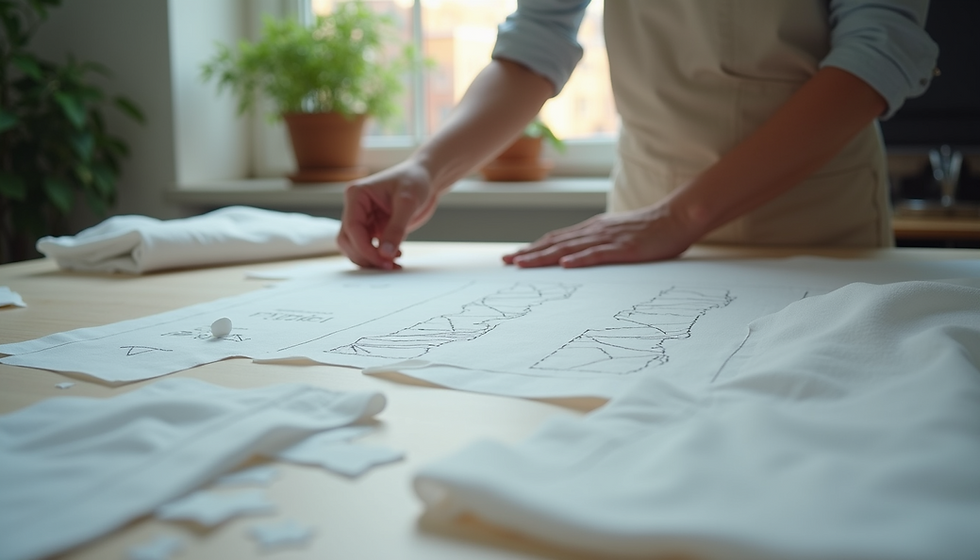A Complete Guide to Clothing Manufacturing for Startups and Private Label Brands
- A2Z Fashion Blog Team

- Feb 10
- 3 min read

Bringing Your Fashion Vision to Life
The fashion industry is constantly evolving, making it an exciting yet challenging space for startups and private label brands. Whether you're launching your first collection or expanding an existing line, finding the right clothing manufacturer is a critical step. This guide walks you through everything you need to know—from defining your brand identity to managing production and logistics—so you can confidently turn your vision into reality.

Step 1: Define Your Brand Identity
Before diving into manufacturing, you need to have a clear sense of who you are as a brand. Ask yourself:
Who is your target audience? Understanding their preferences, lifestyle, and expectations will shape your designs.
What are your brand values? Are sustainability and ethical sourcing key to your brand? Or do you prioritize affordability and trend-driven designs?
What makes your brand unique? Your unique selling proposition (USP) sets you apart in a competitive market and influences design and production choices.
With a well-defined brand identity, you’ll be better equipped to create clothing that resonates with your customers and stands out in the market.

Step 2: Designing & Developing Your Collection
Most clothing manufacturers offer design and development services to help bring your ideas to life. These typically include:
1. Concept Development
A great collection starts with a strong concept. Whether you have rough sketches or just an idea in your head, manufacturers often have design teams to refine your vision and create professional sketches.
2. Technical Design
This involves developing detailed technical specifications that outline measurements, fabric choices, stitching methods, and other essential details needed for production.
3. Prototyping & Sampling
Before committing to full production, manufacturers create samples so you can assess the fit, fabric, and overall quality. This is your chance to make adjustments before bulk production begins.

Step 3: Choosing the Right Materials
Your fabric and material choices have a direct impact on product quality, sustainability, and pricing. Most manufacturers help with sourcing materials, offering options like:
Sustainable Materials
Organic cotton
Recycled fabrics
Bamboo, hemp, and other Eco-friendly textiles
Traditional Materials
Polyester blends (cost-effective but less sustainable)
Rayon, spandex, and other synthetics for stretch and durability
Wool, silk, and premium natural fibers for high-end garments
If sustainability is a core value, look for a manufacturer with ethical sourcing and Eco-friendly options.

Step 4: Understanding Production Capabilities
Finding a manufacturer that aligns with your needs is crucial. Here’s what to consider:
1. Minimum Order Quantities (MOQs)
Some manufacturers require high MOQs, which can be a challenge for startups. Look for a partner who offers flexible MOQs to support smaller production runs as you grow.
2. Production Timelines
Understand the typical lead times for different production stages—design, sampling, bulk production, and delivery—so you can plan launches effectively.
3. Quality Control
A good manufacturer will have quality control measures in place to ensure consistency, durability, and adherence to your brand’s standards.

Step 5: Private Labeling – A Fast Track to Market
If you want to launch your brand quickly without starting from scratch, private labeling is an excellent option. Many manufacturers offer ready-made garments that you can brand as your own. This allows for:
Faster market entry
Reduced development costs
Access to tested and refined product designs
With private labeling, you can focus on branding and marketing rather than starting from the ground up with product development.

Step 6: Managing Logistics & Distribution
Once your products are ready, the next challenge is getting them to your customers efficiently. Here’s what to consider:
1. Warehousing
Some manufacturers offer warehousing solutions to store your inventory until you’re ready to ship.
2. Shipping & Fulfillment
You’ll need to decide between handling fulfillment in-house or using third-party logistics (3PL) providers. Consider shipping costs, timelines, and international shipping options if you plan to expand globally.
3. Inventory Management
Keeping track of stock levels is crucial to avoid overproduction or stock outs. An efficient inventory system helps maintain cash flow and meet demand without excess waste.
Final Thoughts
Launching a fashion brand is both thrilling and complex, but the right manufacturing partner can make all the difference. By understanding your brand identity, making smart material choices, and selecting a manufacturer with flexible production capabilities, you set yourself up for success.
With the right strategy and support, your startup can grow into a thriving brand that makes a lasting impact in the fashion industry. Now, it’s time to take the next step and bring your designs to life!



Comments